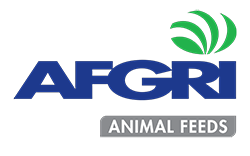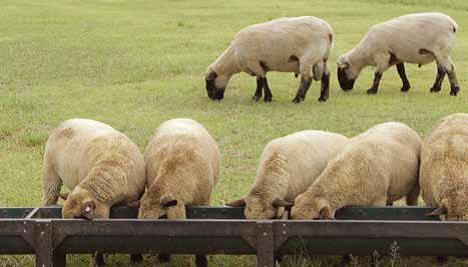Flush feeding is an effective aid in sheep farming
By JW van Niekerk, technical advisor, AFGRI Animal Feeds
An aspect that can have a major impact on the effectivity of sheep farming, is an increase in conception rate and fecundity (multiplets). Flush feeding is a management aid that can be effectively used, under certain circumstances, to increase the lambing percentage and
profitability of a sheep farm.
It is well known that animal condition plays a very important role at the start of the mating season. Nutrition (especially flush feeding) during this phase has an important objective – to ensure that the greatest number of ewes reach oestrus, that ovulation rate (ovum secretion) is maximised, and that the majority of ova are fertilised, implanted and developed into viable foetuses to maximise the lambing percentage.
Adjustment in nutrition
Flush feeding is the term used to describe the adjustment in the nutrition of ewes (and rams) before the start of the breeding season, with the aim of increasing the ewes’ weight.
Ewes were customarily fed less for a period prior to mating in order to lose weight. They were then placed on saved grazing and given an additional flush lick three weeks prior to mating, to quickly
regain their weight. However, research showed that ovulation and conception rates decrease when ewes lose weight shortly before the flush feeding phase, and that it should be avoided at all costs.
Later research indicated that the level of nutrition three weeks prior to mating only has a significant impact if the ewes are not in optimal condition. The goal should be to get the ewes into excellent condition (condition score or CS of 3,5) during mating to ensure an optimal ovulation rate, and thus a high lambing percentage. In addition, if ewes gain weight during mating, they are more likely to produce twins than those that maintain or lose weight.
Flush feeding is a handy aid that can be used to ensure weight gain, thereby maximising lambing
percentage. (Photograph courtesy of Trogtek)
Higher lambing percentage
An increase in ovulation rate is already noticeable when ewes are started on flush feeding four days prior to mating. However, the best results are observed in ewes that start with flush feeding 14 to 21 days prior to ovulation, which is then maintained for the duration of the mating period. A good rule of thumb is for the lambing percentage to increase by 1,5% for each kilogram of additional weight the ewe carries during mating.
Ewes in good condition during mating require less supplementation during mid and late gestation, and especially during lactation, as the ewe can utilise her body fat reserves as energy. It is therefore of paramount importance that profitable sheep farming enterprises keep their breeding ewes in the right body condition (CS 3,5) during mating.
Sperm production in rams
Do not forget the contribution that rams make towards ensuring a high lambing percentage. Flush feeding can help maximise their testes size/volume as well as sperm production. Good nutrition for a period of two months prior to the start of the mating season, can double sperm production. Feeding high amounts of grain must be avoided, as it can adversely affect fertility due to excessive fat deposits in the scrotum, which limits heat exchange.
Breeding rams should receive extra energy rations, especially with a very high level of bypass protein, to maximise the growth of testes and sperm production, as roughly 50% of the dry sperm material is protein.
Make sure ewes and rams are in good condition (CS 3,5) before the mating season commences and that their weight increases during the mating season. Flush feeding is a handy aid that can be used to ensure weight gain, thereby maximising the lambing percentage.


.png)

